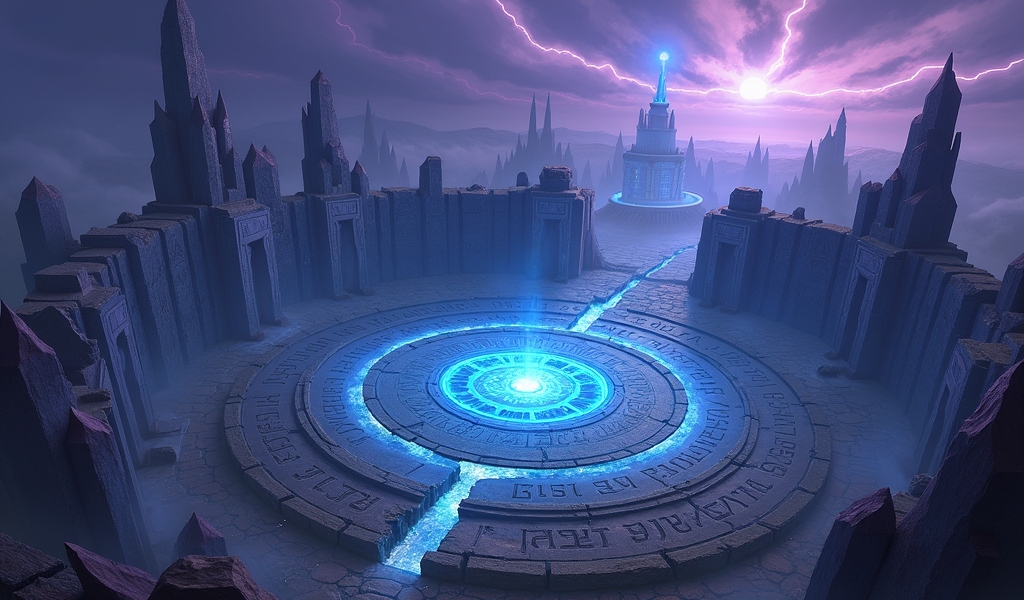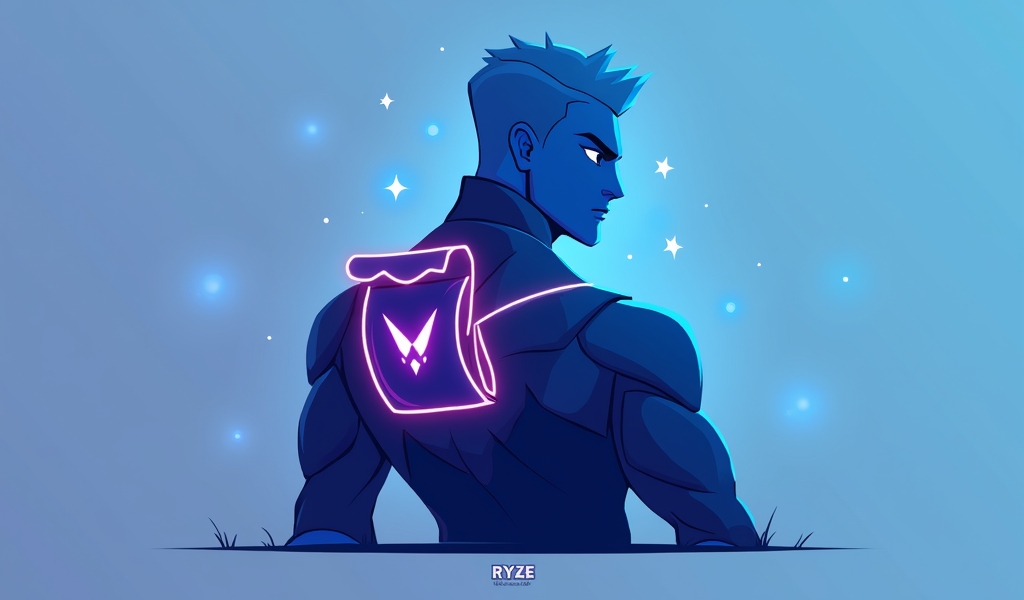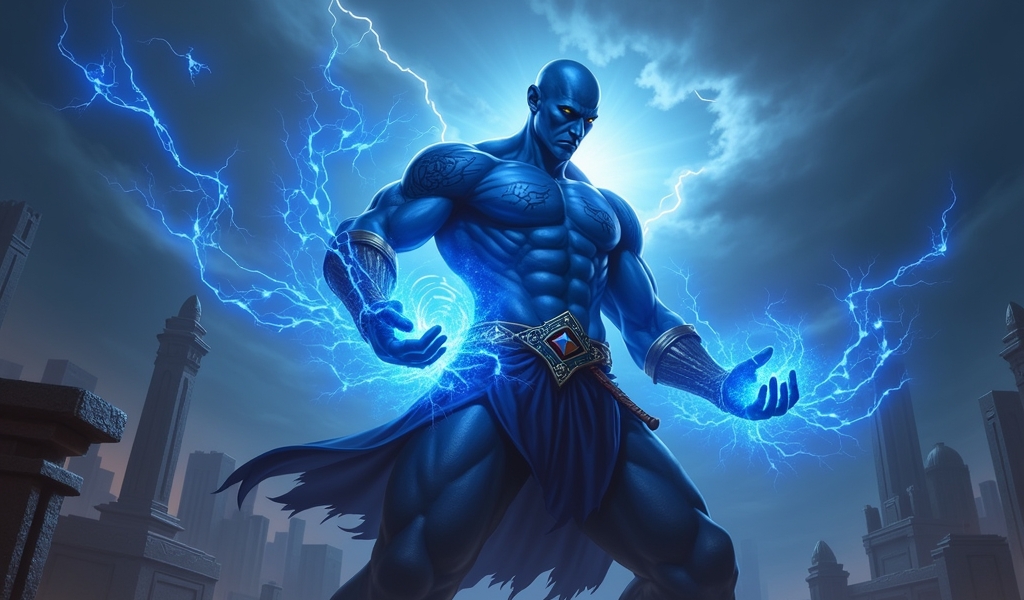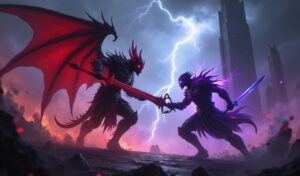Overview
How to play Ryze effectively requires mastering his unique combo system, wave management techniques, strategic roaming, adaptive itemization, and proper teamfight positioning. This blue mage rewards dedicated players with incredible scaling potential, transforming from a careful early-game farmer into a late-game powerhouse capable of carrying through consistent damage output and utility.
Table of Contents
Introduction to Ryze
Learning how to play Ryze effectively can transform your mid lane experience in League of Legends. As one of the game’s most mechanically intricate champions, Ryze offers immense potential for those willing to master his unique spell-slinging combos and strategic gameplay. This blue mage has undergone numerous reworks over the years, but his identity as a battle mage with tremendous scaling potential remains consistent.
Despite his complexity, Ryze rewards dedicated players with incredible wave clear, respectable single-target damage, and surprising mobility. In this comprehensive guide, we’ll break down five essential tips to help you dominate the mid lane with Ryze. Whether you’re a newcomer to the champion or looking to refine your skills, these strategies will elevate your Ryze gameplay and help you climb the ranked ladder.
Understanding how to play Ryze means appreciating both his strengths and limitations. Unlike Orianna’s zone control or LeBlanc’s burst potential, Ryze excels at sustained magical damage and scaling into a late-game powerhouse. Let’s dive into what makes this rune mage tick and how you can harness his potential to dominate your opponents.
Understanding Ryze’s Abilities and Playstyle
Before mastering how to play Ryze, you need to understand his kit thoroughly. Ryze’s power comes from his passive, Arcane Mastery, which grants him bonus damage based on his maximum mana and empowers his abilities when cast in specific sequences. This resource-scaling aspect makes him unique among mid laners and influences his itemization significantly.
His Q (Overload) is his primary damage tool, which resets and gets empowered when you cast other spells. His W (Rune Prison) provides point-and-click root, while his E (Spell Flux) applies a magical debuff that can spread to nearby enemies. Finally, his ultimate (Realm Warp) offers unparalleled team repositioning potential.
Ryze’s playstyle revolves around proper spell sequencing and mana management. Unlike Viktor’s evolution mechanics, Ryze scales primarily with mana items, making his power curve different from many AP mid laners. According to official League of Legends statistics, Ryze’s win rate climbs significantly after the 25-minute mark, highlighting his late-game potential.
The core strength of Ryze lies in his ability to deal sustained magical damage while having tools for both kiting and chasing enemies. However, his relatively short range (compared to artillery mages) means you’ll need to position carefully in teamfights and skirmishes.

Tip 1: Master the Rune Combo System
The fundamental key to learning how to play Ryze effectively lies in mastering his combo system. Ryze’s abilities synergize through his passive, and understanding the right sequence can double or even triple your damage output. The most basic and essential combos every Ryze player should memorize include:
For maximum single-target damage, use the E-W-Q combo. This sequence roots your target while applying full damage amplification. For wave clear and team fights, the E-E-Q combo (casting E on an already fluxed target) allows your Q to bounce between enemies, maximizing AOE damage. When you need to escape, W-E-Q provides the movement speed boost from your empowered Q while creating distance.
Practice these combos religiously in the Practice Tool until they become muscle memory. Pro players like Faker have demonstrated that a half-second faster execution of Ryze combos can mean the difference between securing a kill and missing an opportunity.
Additionally, understanding cooldown management is crucial. Since your Q cooldown resets when casting other spells, weaving basic attacks between abilities maximizes your damage output during extended trades. This technique is especially important during the early laning phase when your damage is limited by mana constraints.
Remember that Ryze’s combos evolve throughout the game. In the early game, focus on E-W-Q for trading. As you transition to mid-game, E-E-Q becomes vital for wave clear and objective control. By late game, you’ll need to fluidly switch between single-target and AOE combos depending on teamfight dynamics.
Tip 2: Wave Management and Farming Techniques
Excelling at how to play Ryze requires mastering wave management. Unlike assassins who roam frequently, Ryze benefits tremendously from steady farm and scaling. Your goal should be to maintain a CS average of at least 8 per minute, which is achievable thanks to Ryze’s excellent wave clear abilities.
During the early game (levels 1-5), conserve mana and focus on last-hitting. Use basic attacks for most minions and save your abilities for securing cannon minions or trading with your opponent. After your first back, when you’ve secured your Tear of the Goddess, you can be more liberal with spell usage for farming.
Here are effective wave management techniques for different game stages:
- Early game: Maintain the wave near your tower to avoid ganks while building your Tear stack
- Mid game: Use E-E-Q to quickly clear waves and create roaming opportunities
- Late game: Clear side lanes with your superior wave clear to generate map pressure
Ryze excels at freezing lanes due to his single-target abilities. This technique is particularly valuable against champions with poor wave clear like Kassadin or melee assassins. By maintaining a freeze, you force them to overextend for CS, making them vulnerable to ganks.
Furthermore, Ryze’s E-E-Q combo allows for rapid wave clearing when needed. This ability becomes crucial for responding to enemy roams or preparing for objective fights. According to OP.GG statistics, high-elo Ryze players consistently maintain higher CS numbers than their counterparts on other mid lane champions.
Remember that farm priority shifts throughout the game. Early game farm translates to a faster Seraph’s Embrace transformation, while mid-game farm accelerates your power spike with items like Everfrost or Cosmic Drive.
Tip 3: Effective Roaming and Map Presence
A common misconception about how to play Ryze is that he should permanently stay mid lane farming. While scaling is important, strategic roaming significantly increases your impact on the game. Ryze’s wave clear and Realm Warp make him surprisingly effective at influencing the map.
The key to successful roaming with Ryze is preparation. Before leaving your lane, shove the wave completely into the enemy tower using your E-E-Q combo. This creates a timing window where you lose minimal CS while having maximum impact elsewhere. Unlike Ahri’s high-mobility roams, Ryze relies more on proper timing and lane states.
Your ultimate, Realm Warp, transforms your roaming potential at level 6. This ability can transport both you and your teammates across terrain, enabling unexpected ganks and objective control. Some effective uses include:
- Warping with your jungler behind enemy laners for guaranteed kills
- Transporting your team to secure objectives like Dragon or Rift Herald
- Creating escape routes from otherwise deadly situations
Remember that communication is vital when using Realm Warp. Ping your intentions clearly to avoid confusing teammates, especially in solo queue environments. The best Ryze players use voice communication to coordinate complex warp plays with their team.
When roaming, prioritize high-percentage plays rather than speculative ones. A guaranteed flash burn or kill in the bot lane is worth more than missing farm for an uncertain skirmish. Pay particular attention to skirmishes around the river, where your arrival can swing neutral objective control in your team’s favor.
Tip 4: Itemization Strategies for Different Matchups
Proper itemization is crucial when learning how to play Ryze effectively. Unlike champions with rigid build paths, Ryze can adapt his items to counter specific threats while still scaling effectively. Your core items should always include mana-scaling options, but the order and supplementary items should vary based on matchups.
The foundation of every Ryze build begins with Tear of the Goddess, which should be purchased on your first back if possible. From there, your itemization branches based on game state:
- Against burst mages (like Lissandra): Rush Verdant Barrier into Everfrost
- Against AD assassins: Seeker’s Armguard into Frozen Heart
- When ahead: Focus on completing Seraph’s Embrace quickly for maximum power spike
- Against heavy CC teams: Consider Mercurial Scimitar as a late-game option
Mythic item choices for Ryze typically come down to Everfrost, Liandry’s Anguish, or Crown of the Shattered Queen. Everfrost provides additional crowd control and catch potential, Liandry’s maximizes damage against tanky compositions, while Crown offers survival against burst damage champions like Malzahar.
Defensive boots deserve special consideration. Against heavy AD teams, Plated Steelcaps can reduce incoming damage significantly. Against AP threats or CC-heavy compositions, Mercury Treads provide valuable tenacity and magic resistance.
As the game progresses, consider utility items that enhance Ryze’s strengths. Cosmic Drive provides ability haste and movement speed for kiting, while Zhonya’s Hourglass offers a crucial active for surviving burst damage. According to Pro Build Stats, high-elo Ryze players frequently adapt their builds based on enemy team compositions rather than following cookie-cutter recommendations.

Tip 5: Teamfight Positioning and Target Selection
Mastering how to play Ryze in teamfights represents the final challenge for aspiring Ryze mains. Despite his battle mage classification, Ryze has relatively short range compared to many mid laners like Azir, requiring careful positioning to maximize effectiveness while avoiding danger.
Your positioning should reflect the game state and team compositions. Against dive-heavy teams, position near your support or ADC to receive peel while dealing consistent damage. Against poke compositions, use your superior wave clear to force engagements where your sustained damage shines.
Target selection follows a simple priority system:
- Primary targets: Immobile carries within reach of your full combo
- Secondary targets: Frontline champions threatening your backline
- Tertiary targets: Anyone safely in range when primary targets are unavailable
Unlike burst mages who empty their kit on a single target, Ryze excels at sustained damage output. In extended teamfights, cycle your combos between multiple targets based on threat level and accessibility. This approach maximizes your damage while maintaining flexibility to respond to changing fight dynamics.
Remember that your Realm Warp can serve defensive purposes in teamfights. A well-timed warp can rescue your team from a bad engagement or reposition to continue a fight on more favorable terms. However, avoid using it offensively during active teamfights unless you’re confident in the outcome.
Vision control becomes especially important for Ryze in the late game. Due to his relatively short range, getting caught out of position can be fatal. Maintain blue trinket charges for checking dangerous areas and always move with teammates when warding deep areas of the map.
Conclusion
Mastering how to play Ryze requires dedication, practice, and strategic thinking. By focusing on these five essential tips—combo mastery, wave management, effective roaming, adaptive itemization, and proper teamfight positioning—you’ll be well on your way to dominating the mid lane with this powerful battle mage.
Remember that Ryze rewards patience and persistence. His learning curve is steeper than many mid laners, but the payoff is a champion capable of carrying games through consistent damage output, utility, and scaling potential. Unlike feast-or-famine assassins, Ryze provides reliable performance even when not massively ahead.
As you continue your journey with Ryze, focus on incremental improvement rather than immediate results. Track your CS numbers, combo execution speed, and map impact to measure progress. With time and practice, you’ll join the ranks of formidable Ryze players who turn this blue mage into a consistent win condition for their teams.
How to play Ryze effectively ultimately comes down to balancing farming efficiency with strategic map presence, all while scaling into the late-game monster that makes Ryze such a feared champion in the hands of a skilled player. Now get out there, stack that tear, and start dominating the Rift!
Frequently Asked Questions
Is Ryze good for beginners in League of Legends?
Ryze isn’t ideal for complete beginners due to his complex combo system and positioning requirements. He’s better suited for players who already understand mid lane fundamentals and are looking for a challenging champion with high skill expression.
What runes should I take on Ryze?
Phase Rush is generally the optimal keystone for Ryze, providing much-needed mobility. Secondary runes typically include Manaflow Band, Transcendence, and Gathering Storm from Sorcery, with Presence of Mind and Coup de Grace from Precision.
How do I deal with assassins when playing Ryze?
Against assassins, take Exhaust instead of Teleport and rush defensive items like Seeker’s Armguard or Verdant Barrier. Focus on wave management to keep the lane near your tower, and use your W (Rune Prison) reactively to counter their engage attempts.
When does Ryze hit his power spike?
Ryze experiences several power spikes: a minor one when completing Seraph’s Embrace, a significant one with his mythic item (usually Everfrost), and his major spike at three items (typically around 25-30 minutes). His late-game scaling continues to improve with each subsequent item.
Should I split push or group with my team as Ryze?
Ryze can effectively split push due to his wave clear and escape potential with Realm Warp, but his team fighting capabilities are also strong. The decision should depend on team compositions and game state – split push when your team can safely stall 4v5, and group when major objectives are contested.




